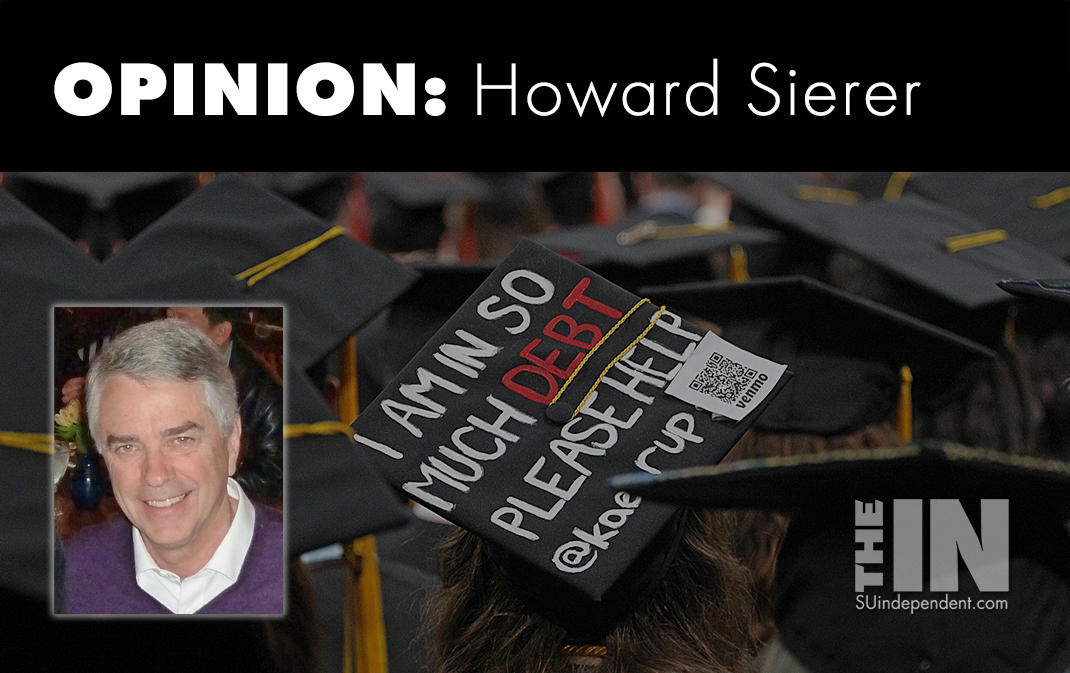
Forgiving Student Debt Done Right
With apologies to Winston Churchill and his famous quote regarding Russia, addressing the college student debt problem is a “riddle wrapped in a mystery inside an enigma.”
In previous columns here and here and here, I pointed out that instead of solving the problem of college affordability, federal government student loans have made it far worse. Year after year, the federal government has violated the first rule of holes: “If you find yourself in a hole, stop digging.” That hole is now $1.7 trillion deep.
When the federal government pushed private lenders out of making student loans, its rationale was enabling students with lesser means to go to college. But when colleges saw students arriving with federal money in hand, they did exactly what Economics 101 would predict: they raised prices. College tuition has increased far faster than the cost of living for decades.
While colleges increased the number of instruction staff moderately, they added far more highly-paid administrators whose numbers now exceed professors on most campuses. The University of California at Berkeley has 38 administrators with the word “diversity” in their job titles.
Universities also began competing with each other for applicants with expensive new student recreation centers complete with top-of-the-line exercise equipment, swimming pools, climbing walls and bistros. Our own Dixie State recently completed its entry in the competition: a glitzy, $50 million “Human Performance Center.”
The student loan debacle has in effect transferred $1.7 trillion from taxpayers’ pockets to college excess while expecting students to pay for the folly. And worse, since these are loans, the expenditures haven’t appeared in the budget deficit: they’re supposed to be assets collecting interest.
Now comes handwringing by (mostly) liberal politicians about how today’s students are burdened with debt they’ll never climb out from under. The Bernie Sanders/Elizabeth Warren/Alexandria Ocasio-Cortez solution: forgive most or all of this debt.
There’s a long laundry list of reasons why this is an exceptionally bad idea:
- Forgiving loans today is an incentive for future students to load up on loans, expecting their debts to be similarly forgiven
- Debt forgiveness encourages colleges to continue raising tuition: more “free” money can be expected in the future from the federal government
- Forgiving today’s debts is an obvious injustice to those who have already paid off their loans. Should these former borrowers be retroactively reimbursed?
- The median income of those with student loan debt is $76,600 per year, well above the far-needier recipients of food stamps, the earned income tax credit or Pell grants
- The largest loans are held by those going to graduate school for advanced degrees and who usually enter higher-paid professions, with the 65 percent of Americans who did not attend college subsidizing those entering the professional class
- Forgiven loans would be taxable, providing no economic stimulus. Matt Bruenig, the founder of the left-wing People’s Policy Project, writes that forgiving student debt is “possibly the least effective stimulus imaginable on a dollar-for-dollar basis.”
So, what to do? Start by recognizing that borrowers who owe less than $5,000 are those most likely to default, often because they did not finish their degree programs and don’t have the higher incomes that a degree would have afforded.
Next, recognize that debt forgiveness will require legislation. An executive order would likely be unconstitutional. If it wasn’t, every new president would cancel debts owed by favored groups, creating havoc with the nation’s finances.
A bipartisan Congressional consensus could likely be built around forgiving $5,000 of debt for all student debtors although those who’ve already paid off loans likely would be left out in the cold, punishing those who budgeted prudently.
A far more important step would be to remove the public punch bowl from the college funding party. That is, terminate the existing student loan program and watch colleges get a dose of fiscal reality by tightening their belts. They’d howl to high heaven, just like spoiled kids complain when Mom and Dad cancel their credit cards.
I wish I could recommend replacing the existing loan program with one carefully tailored to allow only low-income students to qualify for loans. But of course, that’s how the current fiasco got started in the first place. Every government program is started with a noble purpose but soon balloons both in scope and cost.




“Forgiving Donald Trump right”
I understand today six million or so per year, give or take; a couple mil is peanuts to the very, very rich man Trump (he told us he was a very very rich man); so here is a thought.
Take all of his and his family’s government benefits and invest them in a department of public education program for the rest of his and the kids projected lifespan. Include some of his cronies if you want.
Some peanuts thrown to public education and not to that one very very rich seditious person would contribute to Americas’ educational efforts.
Just one persons perk package. Fiscal responsibility. What a concept.
Amazing Howard, you didn’t even use the word/name Trump in your entire article. Ok will re-check 2nd time – hold on. Yea not mentioned. Seems Doug is ready to round up all Trump’s family assets. Oh my. Well Doug the impeachment trial sh#t show is coming in February. Sure you will be tuning in. Burn the witch right? Orange man in orange jumpsuit right? Well my guess your wish will come true. But then the Supreme Court 50%+ chance will overturn impeachment and then your obsessive compulsive Trump issues will act up again. Divided we stand United we fall. Loooooong way to go, but by God – we have sports where Americans can practice civility and respect and relearn how to truly listen and communicate even if they disagree – until a ref makes an irreversible bad call. As for now elementary school kids got us all beat. (hmmm little if no social media exposure in that age bracket ~ very interesting)